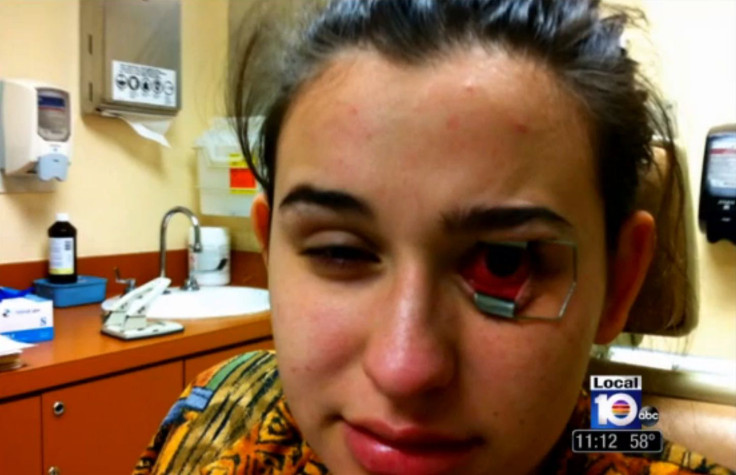Acanthamoeba Keratitis Parasite in Her Eyeball Almost Blinds Florida Teenager

A parasite in her eyeball nearly blinded a South Florida teenager with a gruesome Acanthamoeba keratitis infection, after growing on her contact lens and eating through the cornea of her left eye.
Ashley Hyde, 18, had a throbbing red left eye that doctors initially had no idea how to treat, reported Florida's Local10 news. After drilling into the eye and taking multiple cultures from its surface, they realized that the inflammation was caused by a parasite in her eyeball causing an Acanthamoeba keratitis infection.
According to the Centers for Disease Control and Prevention (CDC), Acanthamoeba is a common microscopic amoeba (single-celled organism) found in water and soil worldwide. While most people are exposed to Acanthamoeba at some point with no harmful effects, it can cause severe eye, skin, and nervous system infections if it enters the body through open cuts or wounds.
Eye infections like Acanthamoeba keratitis typically result from improper contact lens use, and can cause permanent visual damage or blindness if left untreated.
Properly cleaning contact lenses before and after use can limit the disconcerting possibility of parasites in your eyeballs, but disposable contact lenses for daily use may be the best way to prevent infections.
"Every day, we see people come in with contact lens related to infections, complications, ulcers," said Dr. Adam Clarin, a Florida optometrist, to Local10. "There are all things that are potentially blinding."
"There is nothing safer or healthier than throwing out the lens every day and starting with a new one the next day."
Hyde, now a senior in high school in Pembroke Pines, admitted that she did not change her contact lenses regularly before her Acanthamoeba keratitis was diagnosed. She'll be in treatment for a few months before the parasitic infection clears up.
"It hurts," she told Local10, reminding contact lens users not get lazy about proper cleaning. "I wouldn't risk it."
The CDC recommends the following steps to avoid getting Acanthamoeba keratitis, or any other parasites in your eyeballs, from contact lenses:
- Visit your eye care provider for regular eye exams, especially if you experience recurring symptoms like eye pain or redness, blurred vision, light sensitivity, or excessive tearing
- Replace contact lenses as regularly as your eye care specialist prescribes
- Remove contact lenses before any contact with water, including showering, using a hot tub, or swimming.
- Wash hands with soap and water and dry before handling contact lenses.
- Clean contact lenses according to these instructions:
- Never reuse or top off old solution. Use fresh cleaning or disinfecting solution each time you clean and store your lenses.
- Never use saline solution or rewetting drops to disinfect lenses- neither are effective disinfectants.
- Be sure to clean, rub, and rinse your lenses each time you remove your lenses. Rubbing and rinsing contact lenses will help remove harmful microbes and residues.
- Store reusable lenses in the proper storage case.
- Storage cases should be rubbed and rinsed with sterile contact lens solution (not tap water), emptied, and left open to dry after each use.
- Replace storage cases at least once every three months.



























